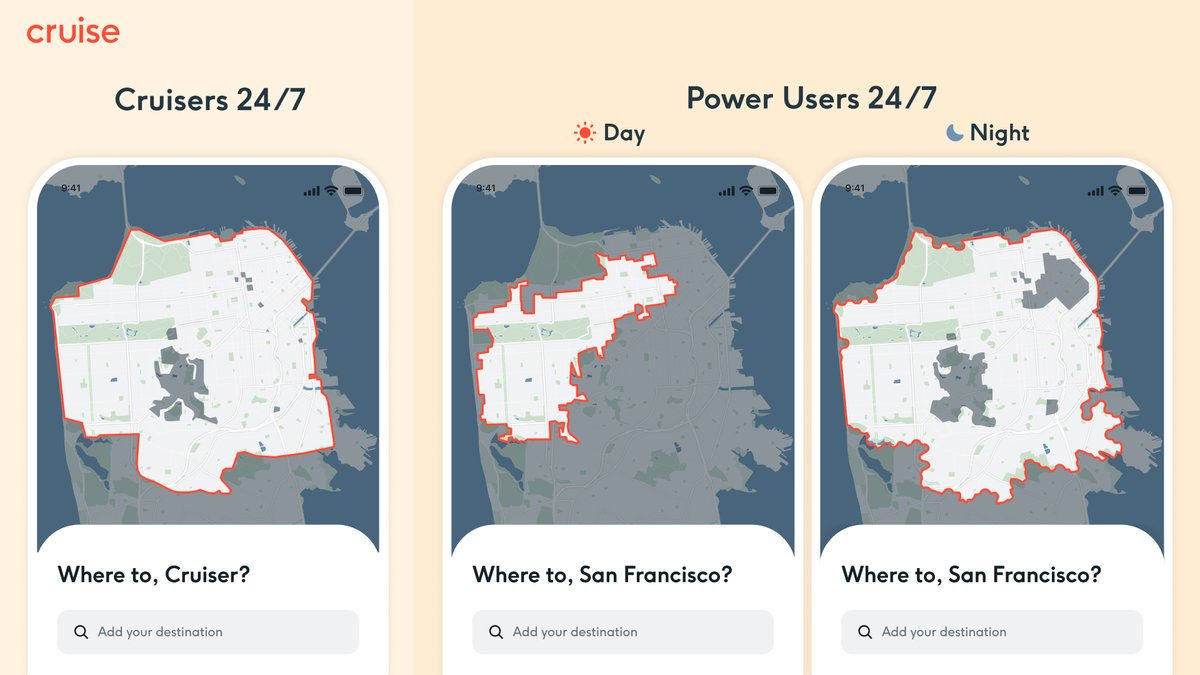Well folks, we did it. I have been waiting for this day for almost 10 years.
I am proud to announce @Cruise is now running 24/7 across all of San Francisco!
This is a pivotal moment for our business.
Let me tell you why 👇(1/6)
I am proud to announce @Cruise is now running 24/7 across all of San Francisco!
This is a pivotal moment for our business.
Let me tell you why 👇(1/6)
Operating robotaxis in SF has become a litmus test for business viability. If it can work here, there’s little doubt it can work just about everywhere. (2/6)
You’ll soon see us open up full operations in other cities. The capabilities and machine learning systems we’ve built to handle things in SF have proven themselves in many other cities around the world. (3/6)
These systems are also the same ones that power the @Cruise Origin, which is just around the corner. (4/6) 

As part of our measured and data-driven approach to expansion, and in accordance with our rigorous safety policies, we will be rolling this out in stages. (5/6) 

There are many challenges ahead for @Cruise, but this is worth celebrating. For us, but also for those who will benefit for generations to come.
Thank you to all current and former Cruisers, our partners at @GM, and everyone who has supported us on our journey so far. (6/6)
Thank you to all current and former Cruisers, our partners at @GM, and everyone who has supported us on our journey so far. (6/6)
• • •
Missing some Tweet in this thread? You can try to
force a refresh

 Read on Twitter
Read on Twitter



